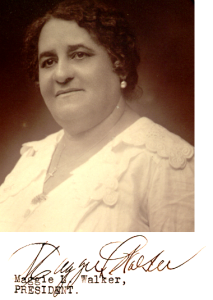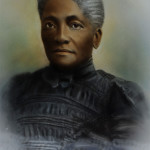Key Lessons
- Do not let personal circumstances be a check on your imagination or ambitions
- Create and support community to increase personal resilience and to have greater impact
- Look for opportunities to “lift as you rise”
America’s first female bank president was, like its first self-made female millionaire, a black woman. She lived in Richmond, Virginia—the capital of the Confederacy—at the height of Jim Crow. Her name was Maggie Lena Walker. Maggie was born Maggie Lena Mitchell in 1867, the daughter of Elizabeth Draper, a former slave and (possibly) a Northern abolitionist. Her mother was married to a black butler who moved the family to a small cottage some time after her birth.
A few years later, her mother’s husband was found murdered, apparently the victim of a robbery. Maggie’s mother worked as a laundress to take care of Maggie and her brother while Maggie attended the local black elementary school, inspiringly located across the street from the local jail.
At age 14, Walker joined the Independent Order of St Luke, a women’s civic organization founded in the year of her birth. The organization became the vehicle for Walker’s many philanthropic and entrepreneurial activities. In 1889, she became its executive secretary and in 1895 she organized its juvenile branch. In 1901, she called for the Order to offer burial insurance and in 1903 she organized the St. Luke Penny Savings Bank which she promised would “take nickels and turn them into dollars.” The bank operated like a credit union with depositors able to buy shares of the bank at $10 a share. The bank also offered savings accounts and mortgages. The Order also established the St Luke Herald, a newspaper.
The Order of St. Luke also established the St. Luke Emporium, a department store that hired and sold to black women but this venture was ultimately unsuccessful. In 1906, Walker broke her kneecap and was confined to a wheelchair. In 1915 her husband was killed by their son who mistook him for a burglar. Her son was eventually cleared but died soon after two exhausting trials. Through all these difficulties she remained active. She established the Richmond Council of Colored Women which had as its motto “Lifting as we climb”. In 1920 she helped organize a voter registration drive that was so successful that 80% of black voters were women (this in the first election in which women were permitted to vote). Walker would also serve as the president of the State NAACP and a board member of the National Association of Colored Women’s Clubs.
During the Great Depression, Walker would merge her bank with the Second Street Savings Bank and the Commercial Bank and Trust Company. The new entity was called the Consolidated Bank and Trust Company and she served as the chairman of the board until her death in 1934. She had one of the largest funerals in Richmond history and in 1979 her home was made a national historic site and museum.
Walker overcame the challenges of her time and place as well as the tragedies of her life. She pursued success in ways that enable her to contribute to the success of others. In this she exemplified selfless resilience and perseverance. A model for us all.
For more on Maggie Walker, see A Right Worthy Grand Mission by Gertrude Marlowe.
In honor of Black History Month, our regular Tuesday and Friday posts will highlight black entrepreneurs who have displayed exemplary success and resilience.


